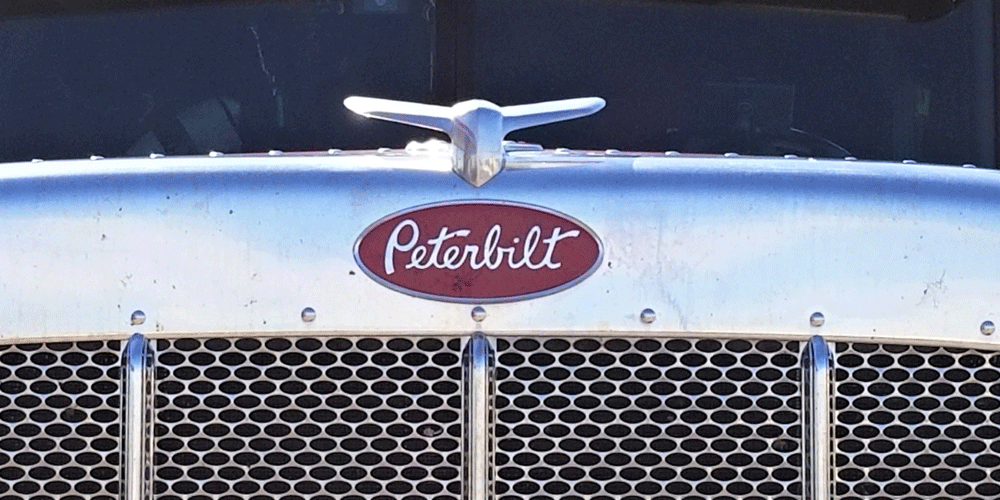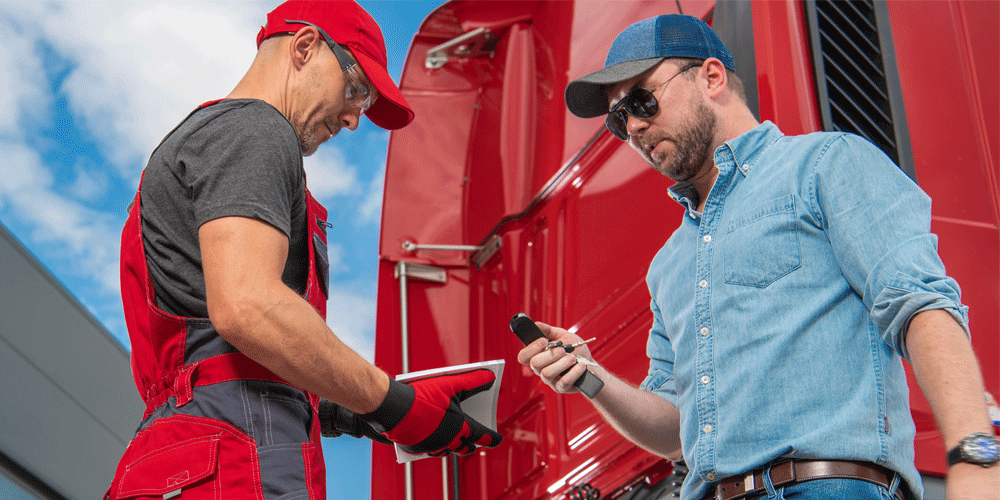David spent more than a decade truck driving. He now serves as a safety manager at ATS making sure drivers like you have all the tools you need to succeed on the road.
Department of Transportation (DOT) inspections — do they intimidate you? Do they send you into a panic?
It can be nerve-wracking going through a DOT inspection, especially if you haven’t gone through many or you’re new to driving.
What happens during an inspection? What are they looking for? What are you supposed to do?
If you don’t know what to do, these questions might be running through your head. Once you go through a few inspections, you’ll know what to expect. But until then, I’m here to help.
I spent more than a decade truck driving and now I spend my time as a safety manager here at Anderson Trucking Service (ATS) making sure you have all the tools you need to succeed (safely) on the road.
In this article, you’ll learn about the six levels of DOT inspections, what you need to prepare before an inspection and what you can expect during an inspection. Inspections are still necessary, but they won’t feel nearly as intimidating once you’ve finished reading this article.
Why Do I Need a DOT Inspection?
The Department of Transportation performs inspections on commercial motor vehicles (CMVs) to ensure that they’re in good working order and can safely operate on the roadways. They’re also in place to ensure that the drivers of commercial vehicles are safely operating the large equipment.
Many accidents are attributed to mechanical failures and issues. These accidents can be prevented with inspections. Inspectors or officers will monitor your equipment to ensure it’s in good working order. How thorough they are will depend on the level of inspection (more on that later).

When Does a DOT Inspection Occur?
You could be pulled over on the side of the road or pulled into a weigh station for an inspection. DOT inspections are tied to compliance, safety and accountability (CSA) scores for each trucking company. So if the trucking company you work for has a high CSA score, you’re more likely to be pulled over.
There are seven Driver Fitness Behavior Analysis and Safety Improvement Category (BASIC) categories, sometimes called buckets, that a CSA score is tied to. They include unsafe driving, crash indicator, Hours of Service (HOS) compliance, vehicle maintenance, controlled substances/alcohol, hazardous materials compliance and driver fitness.
If your carrier has a high score in any of these buckets, you’re more likely to be pulled over and checked for this at weigh stations.
DOT inspections may occur randomly or during what’s called an international roadcheck or DOT “Blitz Week.” During Blitz Week, any component is fair game for inspection, but they typically focus on one specific component. For instance, in 2022 they looked at wheel-end components.
DOT inspections can also happen when an inspector sees something they find suspicious or potentially illegal. If you’re speeding, have a light out or another component that appears to be malfunctioning or you’re driving recklessly, you can expect that you may be pulled over for an inspection.
Who Can Perform a DOT Inspection?
Wondering who’s qualified to perform an inspection? It varies state by state.
When you get to a weigh station, there will be qualified DOT inspectors or state troopers there to perform inspections. All officers must be certified by the DOT to perform inspections.
Some states allow sheriffs to do DOT inspections; some states only allow officers or sheriffs who are certified.
6 Types of Inspections
There are six levels of DOT inspections you may encounter. The first three are more common, but it’s still important to mention the last three.
Level 1
A level one inspection is the most thorough type of inspection. It looks at the driver and the vehicle itself. That means an officer will look at the driver’s license and endorsements, their logs and any paperwork associated with the truck’s load — such as the bill of lading (BOL).
During a level one inspection, they’ll also go under the truck to inspect it.
Level 2
Level two is a walkaround inspection. It’s similar to level one inspection in that they will inspect the vehicle and the driver, but instead of going under the truck to inspect it, they’ll just do a walkaround.
Level 3
A level three inspection is just an inspection of the driver — there’s no vehicle inspection. They’ll check your credentials, make sure your medical card is up to date, ensure your license isn’t expired, make sure your restrictions are being followed and so on. For instance, if you have a glasses restriction on your license they’ll check to see that you’re wearing them.
They may also inspect your logs to ensure you’re logging your hours properly.
Level 4
Level four is a special inspection. These happen when the DOT suspects that a specific component on a particular model of truck is malfunctioning. Across the country, DOT inspectors will pull the suspected truck models over at weigh stations to inspect the part and determine if there needs to be a recall on the part.
This doesn’t happen very often, but it’s important to be aware that it can.
Level 5
A level five inspection occurs after a driver is in an accident and isn’t on the scene for some reason. The driver may be going to a drug test post-accident or they may be at the hospital.
They’ll inspect the truck to see if there was a part failure that may have contributed to the accident.
Level 6
A level six inspection only occurs on radioactive shipments. These inspections are done randomly and they’re performed to ensure the load is compliant.
What Happens During an Inspection?
When you’re pulled over either at a weigh station or at the side of the road, they’ll either explain why you’re being pulled over — or if you’re at a weigh station, they’ll tell you what level of inspection they’ll be conducting.
You’ll receive instructions the whole time you’re under inspection. The officer will lead the inspection and ask you questions and direct you to perform certain actions. For instance, they may ask to see your logs or specific paperwork. They may ask you to turn on equipment like your lights, a blinker or your brakes.
The inspection shouldn’t take more than an hour and you shouldn’t have to wait in line for it. The officer should be ready to inspect you/your truck immediately so you can keep moving on with your day.
How to Prepare for an Inspection
Preparing for an inspection ultimately comes down to working according to rules. The following are good practices to follow to ensure you’re more likely to get a clean inspection.
Keep Your Information Updated
Your driver’s license and medical card should be recent and not expired. You’ll get a violation if your license or your medical card is expired and you can be placed out of service. Your medical card should be certified by the state, so inspectors should be able to pull up your record, but it’s a good idea to keep the card with you.
Keep Important Paperwork With You
Make sure you have important paperwork and required information with you.
Your BOLs should be within reach. Keep them organized. They shouldn’t be crumpled up in a corner. An officer may want to see what you’re hauling and verify details, so you may need to show it to them.
Make sure you have your permit book with you and that everything is up-to-date.
According to the ELD Final Rule, you also need to ensure you have a paper log book, an instruction sheet on ELD malfunctions, an instruction sheet on how to use the machine and how to transfer data to an officer and a user manual.
Follow your HOS
It isn’t uncommon to have your logs reviewed to ensure you’re not in violation of your HOS.
Not only will officers check to make sure you’re not over hours on your clock, but they’ll make sure that you’re clocking your on-duty, off-duty and sleeper berth time correctly.
This is an important reminder to carefully track your HOS and ensure you’re documenting them properly. For instance, an officer may be suspicious if your 34-hour reset is only tracked in your sleeper berth rather than off-duty. Those hours need to be logged differently to differentiate where you spent your time. They’ll also want to ensure you’re using personal conveyance the right way.
Additionally, inspectors can check out your load paperwork to see when you were loaded and unloaded. Your HOS should align with those timestamps.
Be sure that you’re certifying your logs daily.
Keep Your Logs in Check
It’s important to ensure your trailer number is on your logs. Improper form and manner can be a violation if you don’t include this.
Do Your Pre-Trip Inspections
The best way you can ensure you’ll receive a clean DOT inspection is to perform thorough pre-trip inspections every time you return to your truck after more than three hours of off-duty time.
When you do a good pre-trip, you’ll catch potential issues with the components on your truck and trailer. You won’t be surprised by something at the weigh station because you’ll have caught it already.
You’ll avoid a lot of senseless extra CSA points — points that can get you terminated if you have too many — by simply taking 15 minutes out of your day to make sure your equipment is working properly during a pre-trip inspection.
What Happens if You Get a Violation?
Even the most prepared driver ends up with a violation now and again. The consequences of the violation are dependent upon the severity of the violation. Each violation falls into one of the seven CSA buckets mentioned above and that will have an impact on the company’s CSA score.
You’ll receive a roadside inspection form that needs to be sent to your company, signed and sent back to the state. When your company signs it, they acknowledge that they’re aware of the issue and/or the problem was fixed. Some states want that form back within 15 days of the violation; some states want it in 30.
If you have a violation that results in an out-of-service order, you cannot move your truck until you get it fixed. That might mean that you have to wait for a road service crew to come out and repair something or you may simply need to fix a securement before you can be on your way. A more serious violation may result in doing a reset.
If you receive a clean inspection, oftentimes companies will have kickbacks in the form of monetary rewards.
Perform Your Pre-Trip Inspections
Once you know what to expect, DOT inspections are far less intimidating. As long as you’re operating clean, you should sail through every inspection smoothly. And, you’ll be rewarded for it on top of that.
You can ensure no surprises pop up at the weigh station by doing your pre-trip inspections. Sure, sometimes tires blow randomly or lights just go out, but when you keep a pulse on how your truck is running daily, you can prevent a lot of accidents. The most common equipment issues are with brakes, light and tires, so pay careful attention to each of them during your pre-trips.
To help guide you through the process, we’ve put together an article on pre-trip inspections.



